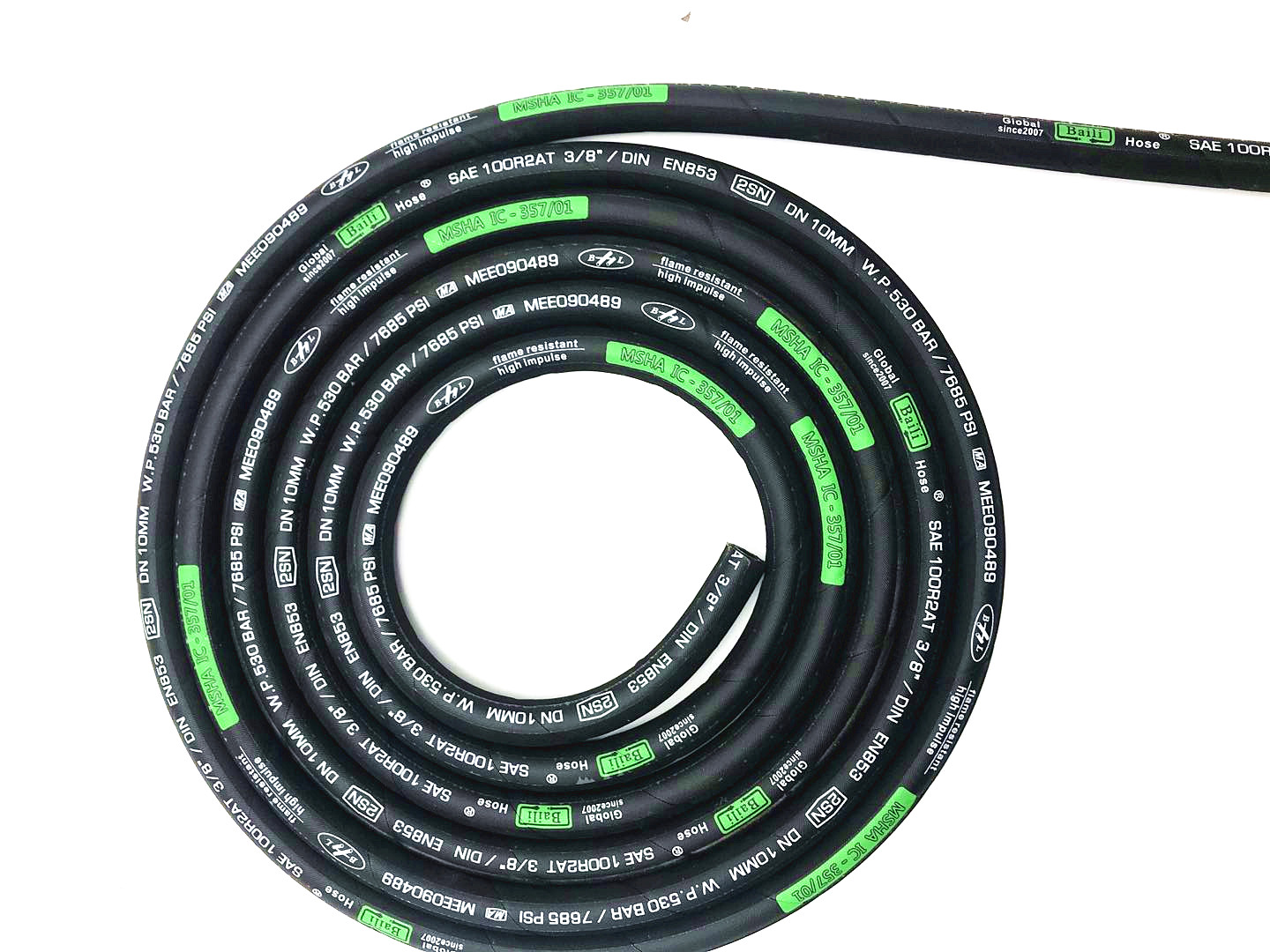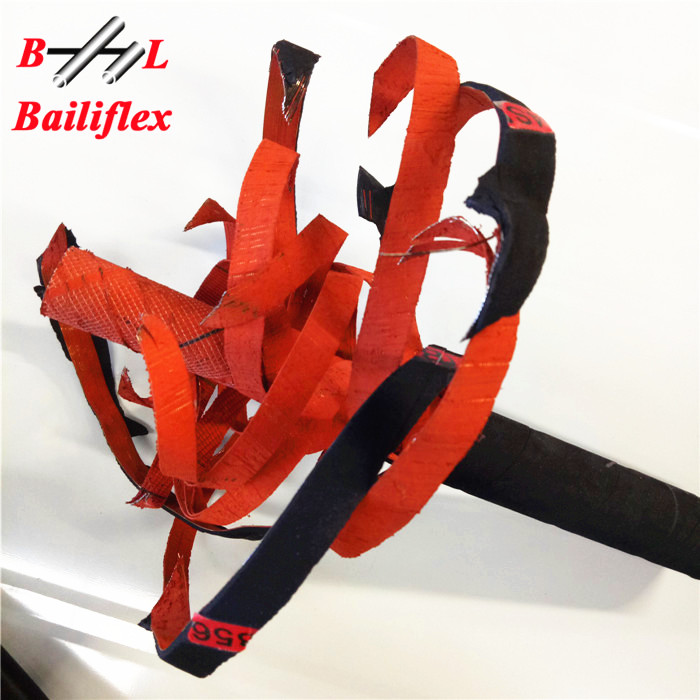Zář . 09, 2023 14:36 Zpět na seznam
How to distinguish the quality of high pressure hose?
The high-pressure hoses that we commonly see on the market are good or bad,There are many kinds of high-pressure hoses on the market, some of which are of good quality and some of which are of poor quality.We need to use professional eyes to identify.I can help you identify the following points:
- 1.First check the outer rubber of the high-pressure hose, whether its surface is smooth and flat, whether there are bubbles, bumps, sponges, trachoma, etc.; when impounding, use a peeling machine to remove the rubber to see if the stripped rubber is continuous Yes, continuous is good quality.

- 2.
- Look at the brightness of the section of the rubber hose from the outside, the one with high brightness is the top grade, and the gelatinous layer should be pinched with nails, and the gelatin has good elasticity.
- 3.
- From the cross section of the hose, whether the steel wire layer inside is uniform or not, it can be distinguished from the diameter of the steel wire. The steel wire mesh of the rubber hose is evenly distributed, and there is no missing weaving place. The thicker the diameter of the inner steel wire, the better.

- 4.
- Check whether the thickness of the pipe wall of the inner rubber layer is uniform, and the size of the inner hole of the rubber pipe, and you can tell it by trying a standard joint.
- 5.
-
- Pass the pressure test. The national standard requires that the test pressure is twice the working pressure, and the burst pressure is generally 3-4 times the working pressure.
To identify the quality of hydraulic hoses, consider the following factors:
Construction: Good quality hydraulic hoses are typically constructed with multiple layers of rubber or synthetic materials, such as neoprene or nitrile. They should also have reinforcement layers, usually made of steel wire or fiber, to increase strength and durability.
Burst pressure rating: Check the manufacturer's specifications for the maximum burst pressure rating of the hydraulic hose. This indicates its maximum pressure capacity and reliability under high-pressure conditions.
Working pressure rating: Similar to the burst pressure rating, the working pressure rating indicates the maximum pressure the hydraulic hose can handle during regular operation. Make sure the working pressure rating meets the requirements of your specific hydraulic system.
Flexibility: Hydraulic hoses should be flexible enough to bend and withstand movement without kinking or twisting. Good quality hoses have a balance between flexibility and stiffness that allows for easy installation and hose routing.
Compatibility: Ensure that the hydraulic hose is compatible with the fluid it will be carrying. Consider factors such as resistance to temperature extremes, chemicals, and oils. The hose should have suitable material and inner lining to prevent degradation and leaks.
Manufacturer's reputation: Research and choose a reputable manufacturer or supplier known for producing high-quality hydraulic hoses. Look for certifications or approvals, such as ISO 9001, that ensure consistent quality standards.Visual inspection: Inspect the hydraulic hose for any visible damage, such as cracks, bulges, or wear.
Pay attention to the fittings and couplings; they should be securely attached and show no signs of leakage.Proper labeling: The hydraulic hose should be clearly labeled with essential information like size, pressure ratings, and manufacturing date.
This ensures traceability and makes identifying the quality of the hose easier.
Overall, it is crucial to invest in hydraulic hoses that meet industry standards, have appropriate pressure ratings, and exhibit durability and flexibility for long-term usage. Consulting with hydraulic experts or seeking professional advice can also assist in identifying the quality of hydraulic hoses.
-
Thermoplastic Hose Chemical Resistance Fluid Compatibility
ZprávyJul.14,2025
-
Steel Wire Braid Hydraulic Hose Factory Production Process
ZprávyJul.14,2025
-
SAE Hydraulic Hose Specs Textile Reinforcement Layer Structure
ZprávyJul.14,2025
-
High Pressure Hydraulic Hose Factory CNC Bending Process
ZprávyJul.14,2025
-
China Wire Spiral Hydraulic Hose High Temperature Resistance
ZprávyJul.14,2025
-
Automotive Air Conditioning Hose Ozone Resistance Testing
ZprávyJul.14,2025
